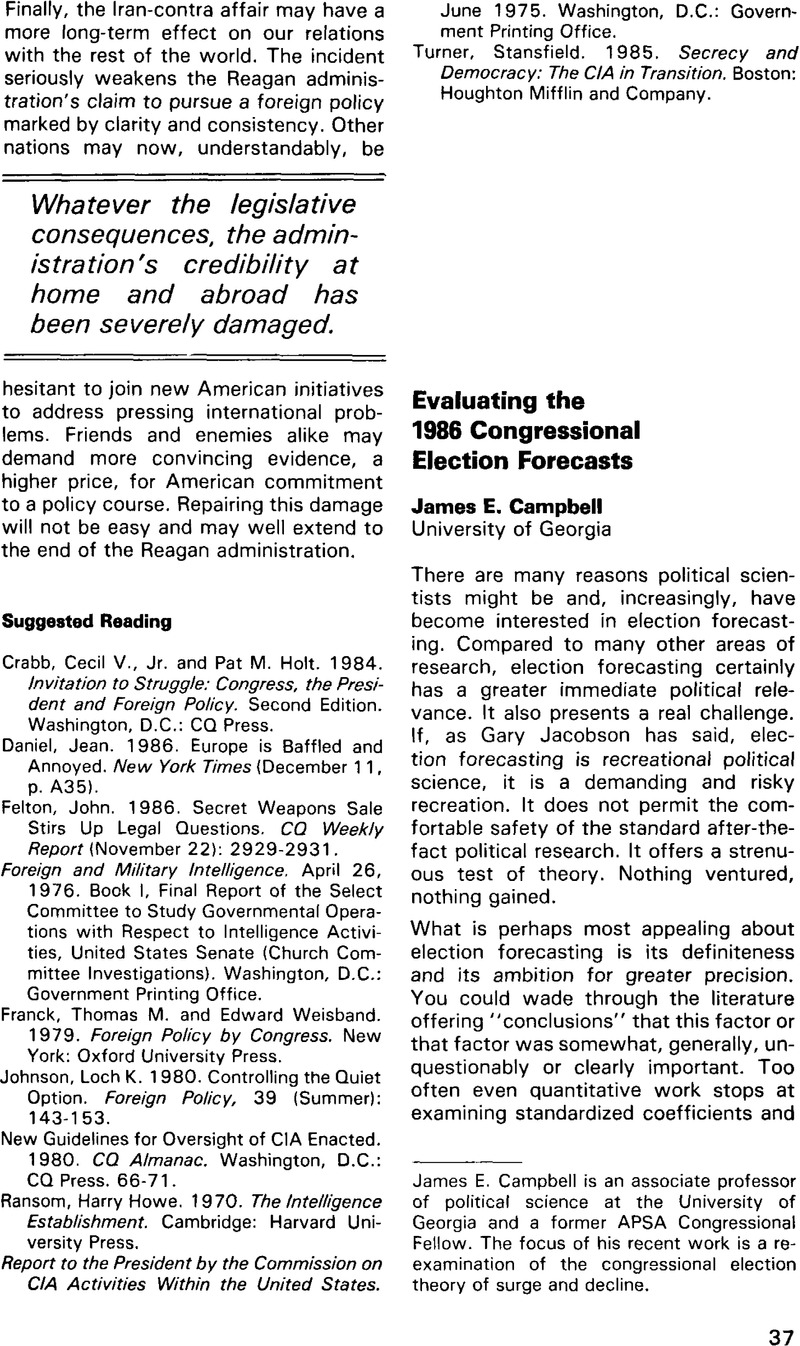Crossref Citations
This article has been cited by the following publications. This list is generated based on data provided by Crossref.
Lewis-Beck, Michael S.
and
Skalaban, Andrew
1989.
Citizen Forecasting: Can Voters See into the Future?.
British Journal of Political Science,
Vol. 19,
Issue. 1,
p.
146.
SMITH, DAVID R.
and
BRUNELL, THOMAS L.
2010.
Special Elections to the U.S. House of Representatives: A General Election Barometer?.
Legislative Studies Quarterly,
Vol. 35,
Issue. 2,
p.
283.
Campbell, James E.
2014.
The 2014 Midterm Election Forecasts.
PS: Political Science & Politics,
Vol. 47,
Issue. 04,
p.
769.





